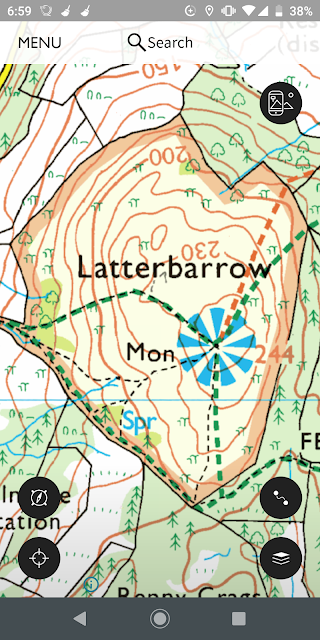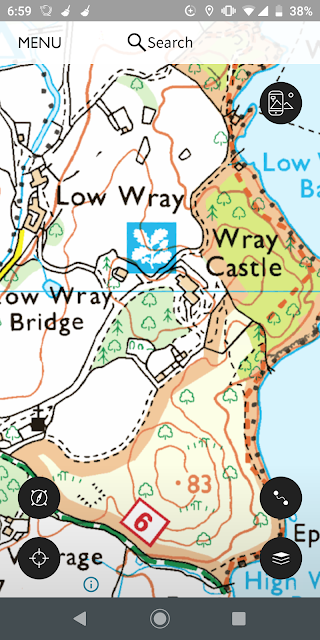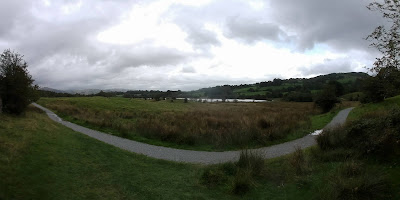So I'm overdue in sharing more walking photos and videos from the Lake District. And I thought while I do that I would also share a bit more about the basics of walking there.
One of the things I love about England is that there is basically a way to walk pretty much anywhere you want to go. This isn't accidental -- it's the result of years of lobbying and civil disobedience (the most noteworthy event of the latter being the "Mass Tresspass" of Kinder Scout in Derbyshire). But what it means is that there are both ancient rights of way that have been maintained and more recent walking trails and footpaths where anyone has the right to walk. In the Lake District where so much land is owned by the National Trust, this is even more pronounced.
There's also an extensively detailed set of walking maps for the entirety of Great Britain, produced from ordnance surveys. These ordnance survey maps have been available on paper, and more recently on an app. I have to admit that I've found the paper maps complicated and unwieldy, and although I carried one on this trip in case I lost signal or my phone battery died, I loved using the app because my phone GPS immediately showed me exactly where I was. Unfortunately you can't see the GPS in these screenshots I took later, but this is what the maps look like on a phone:
It takes some time to learn all of the different markings, but generally a green dashed or dotted line is some sort of walking trail. For me one of the fun things was planning out my route the evening or morning before my walk, deciding what trails I wanted to take and therefore what I wanted to see. The maps detail both topography and noteworthy sights, so they're great for that purpose. The British are also great about marking footpaths and putting up signs, so I could often walk for a very long time without even needing a map check.
I also wanted to talk a bit about gear. One of the other things that's nice about walking in Britain is you're never really THAT far from civilization, and there are usually other people on the path. So while I did carry a paper map, compass, emergency whistle, and small first aid kit in addition to my other supplies in a little waterproof folding backpack, that was the extent of what I needed. I believe I mentioned the trekking pole I purchased, and I was very glad I had that for the remainder of the trip -- it makes stream crossings easier by giving you a third "limb" for balance, and it also eases the burden on joints when going downhill.
The big thing I had regrets about was in waterproof gear. Some of my things were waterproof -- my backpack kept my electronics dry when it rained (and boy did it rain in the second half of my time there), and I brought a waterproof case for my camera, so I was still able to take some pictures when it was raining. However I did a much better job of protecting my electronics than my person! I had a water-resistant rain coat and water-resistant hiking pants, and when I spent enough time in the rain, both of them eventually soaked through. Whenever I get to go back, it's going to be with a new fully waterproof rain coat as well as rain pants.
I also gambled when it came to shoes. You can see the ones I wore for the majority of my hiking above. They are a super lightweight pair, just a bit more than a barefoot shoe, and they were absolutely fantastic...until they weren't. When the weather was dry the light weight gave me a much better spring in my step than I've found in regular hiking shoes, and I'm sure I was able to rack up more miles than I might have been able to otherwise because of this. However they were designed to be worn barefoot, and every once and a while the back of my heels would blister up dangerously. And of course, they were decidedly NOT waterproof. I thought I'd solved for this by buying a pair of rubber shoe covers, but those broke on the first day I've used them.
So for the remainder of my Lake District posts, if it looks wet, imagine me walking in squelching wet shoes. But hey, at least the views were still beautiful! So now for some of those views with pictures and a walking video from my walk back from Wray Castle.






























































.jpg)
